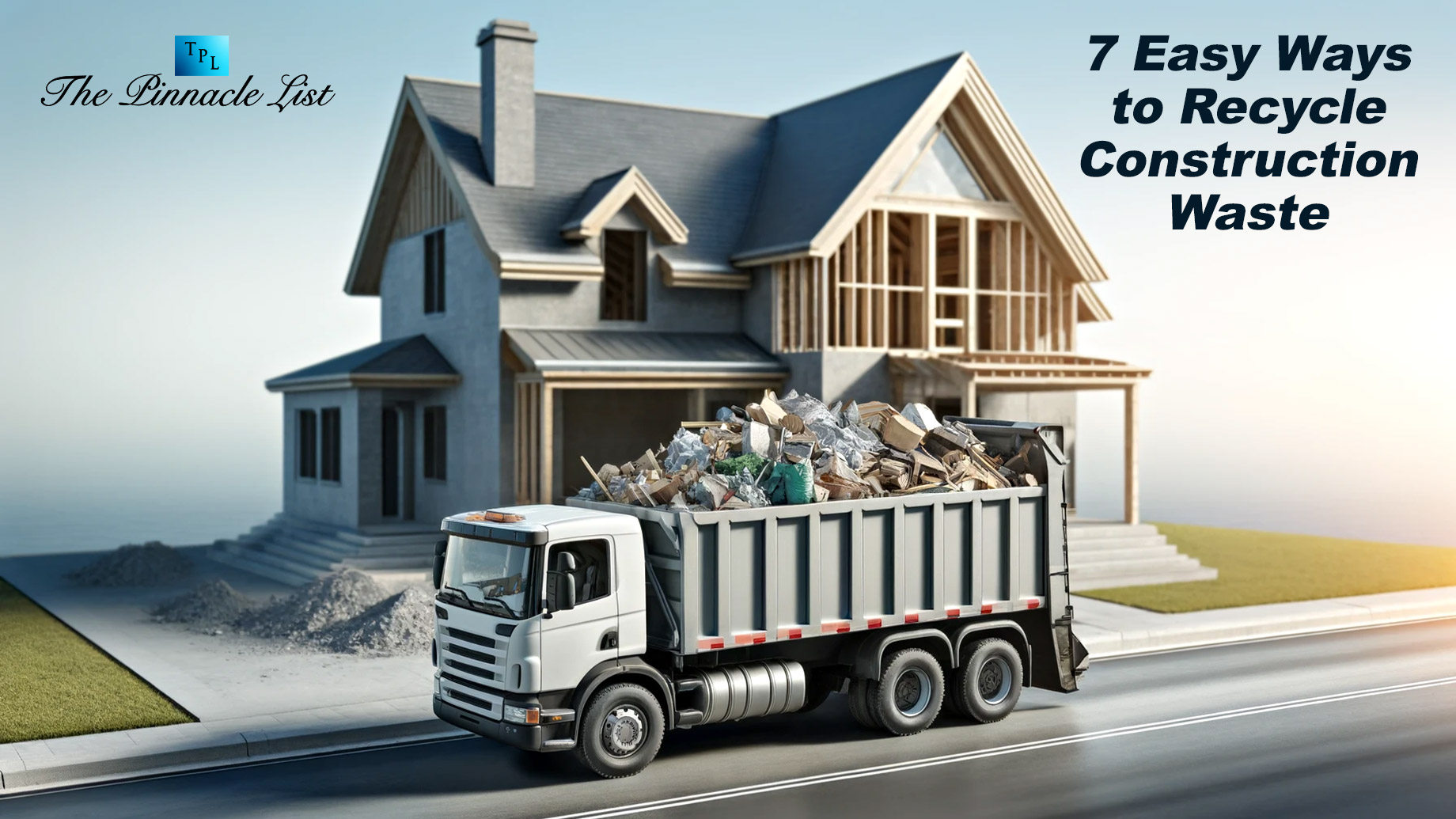
Recycling construction waste isn’t as easy as it sounds. It requires a lot of knowledge and precision to handle the waste otherwise, you may face legal consequences.
However, recycling construction waste is beneficial because it decreases its environmental impact. Yes, you heard it right.
It not only conserves natural resources but also paves the path towards a more sustainable future. So, if you want to recycle your construction waste successfully, this guide is for you.
What Is Construction Waste?
Construction waste is the materials left over after the construction work is done. These materials include concrete, wood, metal, plastics, asphalt, and bricks.
However, are these materials produced? Well, when you do any construction activities like building erection, renovation, and demolition, this material is produced in bulk.
If you want to get rid of construction debris, then it is challenging. But, it is necessary to lower its environmental impacts and promote sustainability.
1. Material Sorting and Separation
Sorting the materials and separating them according to their nature is more important in recycling construction waste.
In simple words, you need to separate the different materials such as wood, iron, concrete, etc., to make sure a proper recycling process can be done.
If you have hired labourers to collect this debris, you must first educate them to separate the debris according to its materials.
When you successfully implement this, you will significantly increase the efficiency of your recycling endeavours.
2. On-Site Crushing and Grinding
Suppose while demolishing any building, you have discovered some concrete and masonry wastes that can easily be used again.
So, instead of hauling them to landfills, you can easily reuse them at your construction site.
But, to use them, you first have to crush them into small pieces using portable crushers and grinders or hammers.
This will also help you save money to fill the lands of your site by cutting down the transportation costs and emissions associated with that waste.
3. Reuse of Salvaged Materials
You can start salvaging materials from your construction or demolition site is a very effective way to recycle your construction waste. There are many salvaging materials, such as bricks, doors, irons, etc.
But, while extracting this material, make sure to remove them carefully, and for this, you need to educate the person who is doing this.
If your contractor is knowledgeable, then he will help you collaborate with salvage yards or architectural salvage companies.
These companies will help you store and catalogue them and make them available for reuse.
4. Recycling Asphalt Pavement
If you have a good quantity of asphalt pavement, which is used in the construction of roads, you can easily recycle it and use it again.
Your asphalt wastes can be recycled by milling and reusing them in new asphalt mixes. You may already know that this process of recycling is known as asphalt pavement recycling.
By doing this, you will help to conserve raw materials, and that significantly reduces the energy requirement for asphalt production.
5. Composting Organic Waste
There are many construction sites that generate significant amounts of organic waste, such as wood scraps, vegetation, and some food waste.
These kinds of waste require handling more carefully. So, you must dispose of them to produce nutrient-rich soil amendments instead of disposing them directly into landfills.
Composting organic waste is more important because it diverts wastes from landfills to use them as chemical fertilisers in landscaping and horticultural projects after processing them.
6. Implementing Reusable Packaging
If some kind of packaging material is used for transporting and storing materials on your construction site, you can reuse them.
These materials include cardboard boxes, plastic wraps, and pallets.
Buying new packaging materials is a waste of money; you can try to reuse them repeatedly to minimise waste generation and reduce the environmental footprint.
7. Engaging in Deconstruction Instead of Demolition
You must encourage the labourers and engineers to, instead of performing traditional demolition, try deconstruction methods.
In this method, we have dismantled the building to salvage materials for reuse in our further construction. There are many materials that can be used in deconstruction, such as lumber, bricks, metals, and fixtures.
You can repurpose them again and reduce the demand for new resources. This also creates more job opportunities in the recycling and salvaging sectors.
Are There Any Benefits of Recycling Construction Wastes?
Yes, recycling construction waste has many benefits, such as conserving natural resources, decreasing the greenhouse gas effect, reducing construction costs, and reducing landfilling costs. So, you must also try to promote the recycling process.